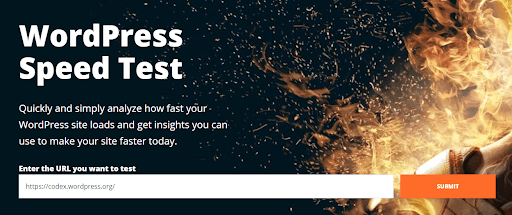Most Common Enterprise Website Problems & How to Fix Them

Almost every company can benefit from running its own website. Without an online presence, you could be missing out on a lot of business. However, you can’t just slap together a website and call it a day, unless you don’t want people to take you seriously.
A well-built enterprise website lets visitors know that your business is a force to be reckoned with. It will explain what you do, and make it clear how you can help potential clients. Of course, it also helps if it looks pristine and works flawlessly.
In this article, we’ll talk about some of the most common problems you can run into with an enterprise website. We’ll explain how they can affect your business, and offer some tips to help you sidestep them. Let’s get to work!
Common Technical Issues With Enterprise Websites
Your business’ website represents your company online, so it’s essential that it isn’t plagued by technical problems. These issues can come in all shapes and sizes, but here are some of the most common:
- Website downtime
- Long loading times
- Broken pages
- Lack of proper indexing by search engines
The first two items shouldn’t be a problem if you choose a reliable web host. That means you’ll want to be picky when it comes to selecting your hosting provider.
As for broken pages, they are one of the most annoying experiences for visitors. Therefore, it’s up to you to regularly check your website, and make sure all of its content is loading as intended. That shouldn’t be a problem to do manually, unless your enterprise website is massive.
Finally, you want people to easily be able to find your enterprise website in the first place. After all, one of its primary purposes is to represent your company online. In most cases, people will find your site using search engines. Fortunately, sites like Google typically ‘index’ your website automatically after it goes up.
In some cases, however, search engines may not index your site (or parts of it) correctly. This can prevent you from getting organic traffic. We’ll talk about how to deal with that and similar issues in a few minutes. First, let’s look at some of the other common problems on enterprise sites.
Lack of Consistency in Enterprise Websites
Most popular websites offer intuitive and pleasant browsing experiences. While you’re navigating them, every page and element feels organic, and it’s not a chore to find the content you want.
That’s the standard every site should aspire to – particularly company websites. After all, you want visitors to see that you run an efficient and professional operation. Your enterprise website’s design plays a key role in making that apparent.
Consistency in your site’s design and structure can be just as important. To ensure this, you’ll want to:
- Use a consistent URL structure.
- Ensure that all pages share a similar design (i.e., colors, layouts, the types of images you use, etc.).
- Adopt the same ‘voice’ for content throughout your site.
- Make sure all pages run at the same (or similar) speeds.
A lot of people worry too much about having a flashy design. The truth is that your website can look simple and still be effective, as long as it offers a top-notch experience. If you can manage to provide that on top of an excellent design, then you have a winner on your hands.
Servers Can’t Handle Enterprise Traffic
If you’re running a large business, it stands to reason that your website will receive significant traffic. The problem is that not all web hosts offer plans capable of handling ‘enterprise-level’ activity.
For example, if your site is getting thousands of hits per month, that can be enough to overwhelm a lot of hosting plans. When that happens, visitors will start to experience long loading times, errors, and a lot of frustration.
There are a lot of ways you can optimize your enterprise website so that it runs smoothly. Ultimately, however, your site’s performance will largely rely on which web host and plan you choose.
Lack of Meaningful Content
A lot of enterprise websites are little more than digital brochures, so to speak. They include a lot of pictures and little tidbits of information about their businesses, but they don’t tell visitors anything meaningful.
In most cases, people will visit your website because they’re looking for specific information. They may want to know how to contact your company, to learn what it does, to find details about its workforce, etc. It’s your job to make sure your enterprise website provides real value.
Here are some ways you can do that:
- Post content that’s relevant to your industry.
- Use your site to share news about the company.
- Include useful information about how you can help potential customers.
These tips will not only make your website more engaging, they’ll also help you achieve better Search Engine Optimization (SEO). If you don’t have any meaningful content, search engines won’t send traffic your way unless people search specifically for your company. The more quality content you include on your site, the better your chances are of finding new business.
How to Check Your Enterprise Website
At this point, we’ve covered some of most common enterprise website issues you’re likely to run into. Now it’s time to talk about how to solve them. Let’s roll up our sleeves!
Step 1: Check Your Site’s Indexing
As we mentioned earlier, if search engines don’t index your website – or even if they fail to see parts of it – you can miss out on a lot of traffic. Usually, search engines bots will crawl your site on their own, but they can make mistakes.
If you want to make sure your website is properly indexed, you can use Google Search Console to get a coverage report. This will tell you which pages on your site are indexed and which ones aren’t:

Ideally, all your content will be indexed properly. However, if you run into any blind spots, they may be due to an issue with your sitemap. In that case, you’ll want to check out a guide on how to get your entire site indexed.
Step 2: Monitor Your Enterprise Website’s Performance
In many cases, you might not notice if your website is a bit sluggish. That means you may see an increase in your bounce rate, but you won’t know what’s causing it.
Ideally, websites should fully load in two seconds or less. If you’re not sure what your site’s performance is like, you can use a speed testing solution to help you find out, such our own WordPress Speed Test tool:

This easy test provides you with up-to-date measurements and past performance data. That way, you’ll be able to spot if your performance is starting to slip, and can correct it right away.
Improve Your Enterprise Digital Experience With WP Engine
If you’re running an enterprise website, you need to be on top of your game. That means you’ll want to identify and tackle problems swiftly, so they don’t affect your business.
Opting for an enterprise WordPress hosting solution that can help you troubleshoot technical issues and provides you with excellent performance is a great place to start. With WP Engine, you get access to all of that on every one of our plans, so check them out today!


